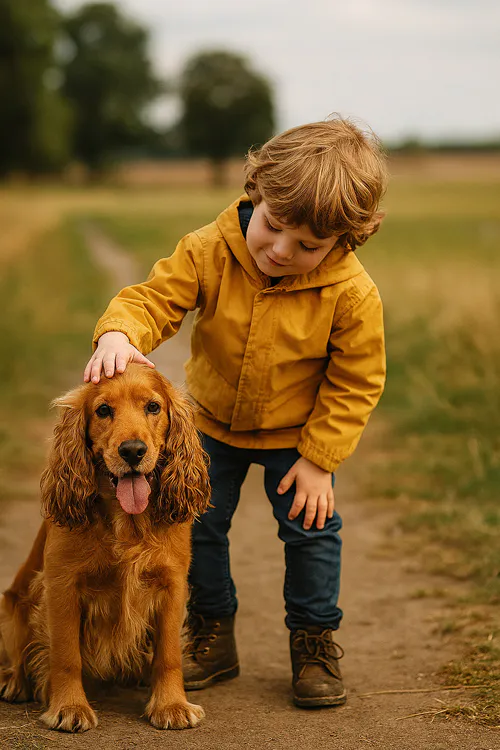
The Cocker Spaniel is one of the most recognisable and well-loved breeds in Britain and America. Known for its gentle nature, expressive eyes and long silky ears, it has been a favourite both as a working gundog and as a family companion. Its adaptability and charm have helped it remain a popular choice for decades, appealing to households that value both an affectionate pet and an active partner.
The breed’s origins trace back to Spain, where spaniels were first developed as hunting dogs. By the 14th century they had spread across Europe, with British breeders refining them into land and water types. The Cocker Spaniel’s name comes from its skill in flushing woodcock, a game bird prized by hunters. In the 19th century, spaniels in the UK were divided by size and purpose, with the smaller dogs used for woodcock hunting becoming known as Cockers. The breed was officially recognised by The Kennel Club in 1892. In the United States, the Cocker Spaniel developed along a slightly different path, with breeders favouring a smaller head, shorter muzzle and more profuse coat. This led to the creation of the American Cocker Spaniel, now considered a separate breed. The English Cocker Spaniel, the focus here, retained its original proportions and working ability. Interest in the breed has been sustained through both its field performance and its success in the show ring, with revivals in popularity following high-profile wins and appearances in media.
Adult English Cocker Spaniels typically stand between 38 and 41 centimetres at the shoulder, with males slightly larger than females. Weight ranges from 12 to 15 kilograms, giving them a sturdy yet manageable build. Their coat is flat or slightly wavy, with feathering on the legs, chest and belly. Colours vary widely, from solid black, liver or golden to parti-colours and roans. The breed’s eyes are dark and full of expression, which contributes to its friendly appearance.
Temperament is one of the Cocker Spaniel’s strongest qualities. They are affectionate, eager to please and generally good with children, making them suitable for family life. Their gundog heritage means they are energetic and enjoy regular exercise, whether in the form of walks, games or training sessions. They are intelligent and responsive, which makes them trainable, but they can be sensitive to harsh handling. Consistent, positive reinforcement works best. While they are adaptable to different living environments, they thrive in homes where they can be part of daily activities rather than left alone for long periods.
Maintenance for a Cocker Spaniel is moderate. Their coat requires regular brushing to prevent tangles and matting, especially in the feathered areas. Professional grooming every few months helps keep them tidy and comfortable. Ears need particular attention, as their long, pendulous shape can trap moisture and debris, leading to infections if not cleaned regularly. Exercise needs are moderate to high, with at least an hour of activity each day to keep them healthy and content. Mental stimulation is equally important, as boredom can lead to unwanted behaviours.
Common health issues in the breed include ear infections, progressive retinal atrophy, cataracts and hip dysplasia. Some Cockers are prone to autoimmune conditions and skin problems. Responsible breeders screen for hereditary diseases and provide health clearances for breeding stock. Regular veterinary check-ups, a balanced diet and good grooming habits go a long way in maintaining their wellbeing.
In terms of popularity, the Cocker Spaniel has consistently ranked among the top breeds in the UK, often within the top five according to The Kennel Club’s registration figures. In the US, the American Cocker Spaniel has historically been more common, but the English Cocker Spaniel still enjoys a strong following, particularly among those who appreciate its working ability and classic looks. Its enduring appeal lies in its combination of beauty, temperament and versatility.
The Cocker Spaniel’s history as both a skilled working dog and a devoted companion has shaped it into a breed that can fit into many lifestyles. For active families, it offers a playful and loving presence. For those interested in field sports, it retains the instincts and abilities that made it a valued gundog. With the right care, training and attention, a Cocker Spaniel can be a loyal and joyful member of the household for many years.
Whether seen bounding through a field or curled up at a child’s feet, the Cocker Spaniel continues to capture hearts. Its balance of energy and affection, coupled with its rich history, ensures it will remain a favourite for generations to come.
